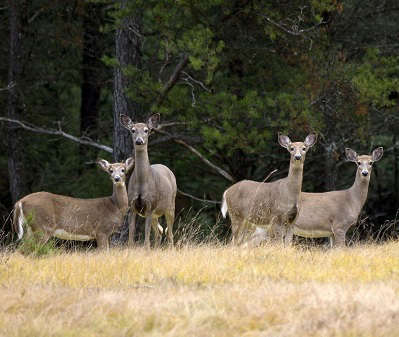DNR, MDARD update Michigan’s plan for managing chronic wasting disease
GW: The revisions in the newly modified CWD response plan are focused more on affected areas, rather than the broad, far-reaching actions in the previous plan – no doubt resulting from hunter outrage. But, now, if neighboring states are found with CWD, Michigan’s plan may swing into action.
The Natural Resources Commission adopted changes to chronic wasting disease baiting and feeding regulations, as outlined in the state’s newly revised CWD response plan, at its regular monthly meeting Thursday in Lansing.
Department of Natural Resources Director Keith Creagh and Department of Agriculture and Rural Development Director Jamie Clover Adams recently signed the first revision to the CWD plan since it was adopted a decade ago.
The updated plan takes into account the large amount of research and case studies on CWD that have become available since Michigan’s original Surveillance and Response Plan for Chronic Wasting Disease of Free-ranging and Privately Owned Cervids was finalized in 2002.
“This plan is critical in guiding our state’s response to CWD, as it did when the disease was found here a few years ago,” said DNR Wildlife Division Chief Russ Mason. “Much of the 2002 plan is still valid and sound, but we now know a lot more about what causes CWD, how it is spread, what the public thinks about how the disease should be addressed, and the results of CWD management efforts in other states. In light of this, we decided that some modifications to the plan were in order.”
“CWD is a reportable disease, so if the disease is detected in free ranging cervids or a Michigan Privately Owned Cervid facility, we will define a surveillance zone around the positive case,” said State Veterinarian Steven Halstead. “This plan should protect Michigan’s cervid industry as well as Michigan’s free-ranging deer population while meeting our ultimate goal of safeguarding animal health.”
The principal changes to the plan are: The plan will be implemented if a CWD-positive animal is found within 10 miles of the Michigan border, rather than 50 miles as in the original plan.
Baiting and feeding will be banned in any county within a 10-mile radius of where CWD is detected.
All Privately Owned Cervid facilities within that zone will be required to complete increased disease testing of their herds to monitor for signs of CWD.
If the disease is diagnosed in a Privately Owned Cervid facility, all facilities that have had contact (through purchases, sales or immediate contact) will undergo increased disease surveillance testing, and exposed animals will be removed from contact herds.
These changes eliminate the peninsula-wide management provisions for dealing with a CWD occurrence.
Actions that remain from the original response plan include: immediate baiting and feeding bans; a restriction on removing anything more than the boned meat, hide, and antlers of a deer or elk taken within the CWD management zone; and mandatory CWD testing of animals remain in effect.
Michigan’s Regional Deer Advisory Teams and a variety of hunting groups have reviewed the modified plan.






